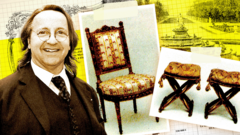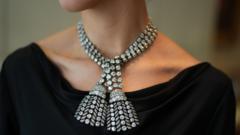Bill Pallot, a prominent connoisseur known for his expertise in 18th-century French chairs, now finds himself on trial in France. Once a celebrated figure within the art and antique community, he gained notoriety for his ability to authenticate significant pieces, even receiving accolades that led to several items being labeled as national treasures. His impressive track record included consulting for prestigious institutions such as the Palace of Versailles.
However, Pallot's downfall came through a former student who developed an extraordinary sensitivity to the nuances of antique furniture, allowing him to discern between real and counterfeit artifacts. The exposures ultimately shed light on Pallot’s alleged manipulation of affluent buyers, including Prince Abdullah bin Khalifa Al-Thani of Qatar, for purportedly authentic pieces with royal connections, specifically chairs claimed to have belonged to figures like Marie Antoinette and Madame du Barry.
Pallot's initial rise in the art world was bolstered by his influential book, “The Art of the Chair in 18th Century France,” which featured a preface written by famed designer Karl Lagerfeld. For nearly four decades, his assertions and expert opinion lent credibility to his claims, ultimately leading to the successful sale of fraudulent pieces to unsuspecting collectors and institutions.
Now, as Pallot stands trial, he symbolizes the perils within the lucrative world of antiques, where heritage and authenticity are paramount, yet vulnerable to manipulation by those trusted with their preservation.
However, Pallot's downfall came through a former student who developed an extraordinary sensitivity to the nuances of antique furniture, allowing him to discern between real and counterfeit artifacts. The exposures ultimately shed light on Pallot’s alleged manipulation of affluent buyers, including Prince Abdullah bin Khalifa Al-Thani of Qatar, for purportedly authentic pieces with royal connections, specifically chairs claimed to have belonged to figures like Marie Antoinette and Madame du Barry.
Pallot's initial rise in the art world was bolstered by his influential book, “The Art of the Chair in 18th Century France,” which featured a preface written by famed designer Karl Lagerfeld. For nearly four decades, his assertions and expert opinion lent credibility to his claims, ultimately leading to the successful sale of fraudulent pieces to unsuspecting collectors and institutions.
Now, as Pallot stands trial, he symbolizes the perils within the lucrative world of antiques, where heritage and authenticity are paramount, yet vulnerable to manipulation by those trusted with their preservation.






